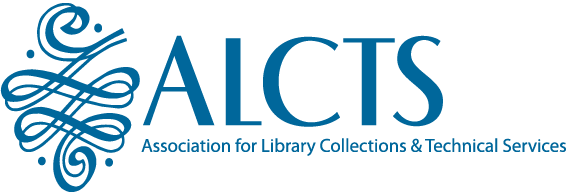Reproductions (Microform and Electronic) and Original Sets
Many MARC record sets have been created over the years for the purpose of providing bibliographic control of commercially available large microform sets. Record creation for many of these sets is ongoing but, increasingly, migration of their content to electronic reproductions or electronic versions is occurring. It is logical to ensure that records for the electronic sets are given the same level of quality cataloging whether they represent "born digital" resources, electronic versions, or reproductions of microform and print materials. The development of integrated library systems now allows for the processing of individual sets to be a routine part of technical services activities. Set processing, sometimes referred to as profile matching, is the capability to produce programmatically files or sets of records for all the titles in a given set and to add to the records such specified local data as call number and location for the set. OCLC offers this capability.
The main objective of these guidelines is to encourage the cataloging of sets in any format even if the set (or the migration into a digital form) is not complete, to encourage the use of standards in the careful transformation of records from one format to another, and to have the set records made available to other libraries through set-processing capability. Two primary considerations are paramount in these guidelines.
First, many publishers are interested in creating or transforming existing microform sets into electronic sets. Catalog records for the microform sets can form the basis for creating new catalog records for the electronic sets. Publishers need guidelines in order to provide the best records at the most appropriate level that will be accepted by the library community. To achieve this goal, some basic expectations of standards are highly desirable. The ideal situation is the contribution of these set records to a bibliographic utility, but the sharing of vendor/publisher-created set records beyond the local catalog, even to a consortium, may be governed by either the library’s or the consortium’s contract with the vendor. Sometimes the purchasing library (consortium) may contribute some added value to the record set. For example, a library may add individual Library of Congress classification numbers to the records or they could verify and correct name headings according to a national authority file for a set of vendor records. When this occurs to vendor created sets, all efforts should be made to encourage the vendor to allow the addition of the records to OCLC.
Second, catalog records created by libraries or publishers and made available to others through set processing are generally loaded into online public access catalogs without the usual checking for quality or descriptive accuracy that is done when cataloging individual titles. Again, adherence to some basic guidelines will help ensure a certain degree of consistency in the quality of the records.
In September 2005, a Task Force was established by the Program for Cooperative Cataloging at the Library of Congress to establish guidelines for publishers/vendors/libraries who are creating MARC record sets. The link to the final report to the Committee (containing these guidelines) is: http://www.loc.gov/catdir/pcc/sca/frevrfinalreport919.pdf
Guidelines
- If a set has been cataloged in one format, appropriate guidelines should be followed when using the existing records as a basis for creating records for the new format.
- If the records are for reproductions, the catalog records should (a) comply with current cataloging standards, following either the Library of Congress (LC) interpretation for reproductions of previously published works or, at a minimum, the access level standard (serials: http://www.loc.gov/acq/conser/pdf/alr/MandatoryElementSetFinalreport.pdf ) and (b) ideally be in MARC21 format. Record sets should be created at as full a level of cataloging as possible. Headings should follow the current nationally accepted descriptive cataloging standards (at time of writing, this was AACR2, 2002 revision) for choice and form of heading. The descriptive elements may reflect earlier cataloging practices, especially if they are for reproductions.
- If records are for “born digital” resources or otherwise not reproductions, the catalog records should (a) fully comply with current cataloging standards and (b) be in MARC21 format. Record sets should be created at as full a level of cataloging as possible.
- Catalog records in MARC21 format should be made available, at reasonable cost, to any institution, organization, library, or consortium that wishes to acquire them. Furthermore, there should be no restrictions or extra costs associated with libraries' use of the records for their local catalogs. It is to be encouraged that value added by the library be negotiated into a licensing contract.
- For catalog records created on systems with set processing capability, proper coding as consistent with the system's policies and procedures needs to be maintained.
- Catalog records for microform sets should be created in such a way that individual titles can be easily retrieved by the user and the records easily maintained by libraries. Catalog records in electronic sets should have URLs that link to the specific aspect of the resource being cataloged, e.g., a particular volume of a multipart item. Print publication patterns and bibliographic relationships such as serial title changes, monographic series and monographic continuations should be preserved when possible within the bibliographic records.
October 20, 2006
